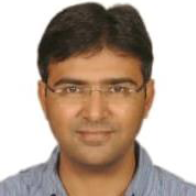
Shankar K. Parmar
Work place: Government Engineering College, Godhra, Gujarat, India
E-mail: Shankar.parmar@gtu.edu.in
Website: https://orcid.org/0000-0002-3034-5144
Research Interests:
Biography
Dr. Shankar Parmar earned his Ph.D. from Gujarat Technological University, Gujarat, India. He has been actively involved in the teaching profession since 2004 and is currently serving as an Assistant Professor at Government Engineering College, Godhra, Gujarat. His research interests include Machine Learning, Biomedical Signal Processing, and Image Processing.
Author Articles
Impact of EEG Rhythm on the Prognosis of Epilepsy
By Neeta H. Chapatwala Chirag N. Paunwala Shankar K. Parmar
DOI: https://doi.org/10.5815/ijigsp.2025.05.01, Pub. Date: 8 Oct. 2025
A chronic neurological disorder called epilepsy is characterized by frequent, unplanned seizures. A seizure is an unexpected and uncontrolled electrical disturbance in the brain that can cause a variety of physical and behavioral symptoms. Prognosis of epilepsy can be done based on pre-ictal (prior to seizure) signal variations in Electroencephalogram (EEG) rhythm. EEG rhythm like alpha, beta, theta and delta are substantial for epilepsy analysis. This study aimed to investigate the impact of various features from EEG rhythm and the feature reduction in classification of pre-ictal and inter-ictal (between two seizures) signal. Dataset of CHB-MIT comprises of 23 patients with 23 channels are used to extract Time, Frequency and Time-frequency features from EEG rhythms. Analysis shows that, compared to other bands, beta band features show major variation in pre-ictal and inter-ictal phases, which makes training of a Support Vector Machine (SVM) classifier easy for prediction of seizures. Further reduction in feature size using statistical analysis helped to achieve 75% reduction in computation. Results show average sensitivity of 93% and false positive rate of 0.14 per hour. The proposed method classified pre-ictal signal with maximum accuracy of 95%, sensitivity of 100%, specificity of 93% and false positive rate of 0.07per hour with reduced complexity compare to other state of art methods.
[...] Read more.Other Articles
Subscribe to receive issue release notifications and newsletters from MECS Press journals